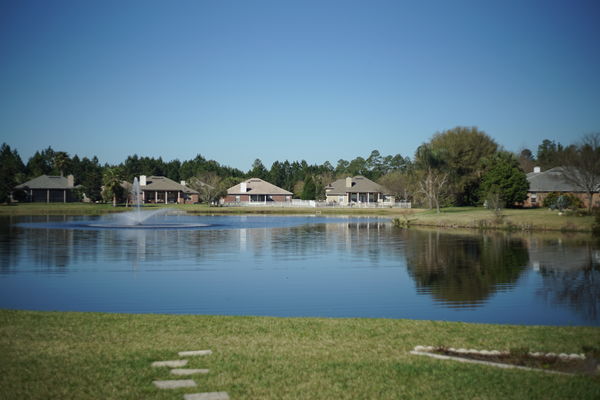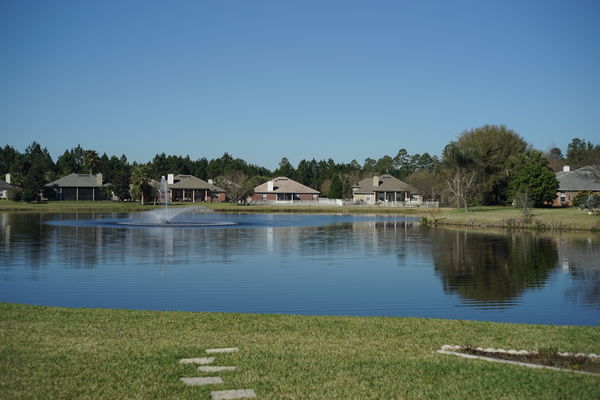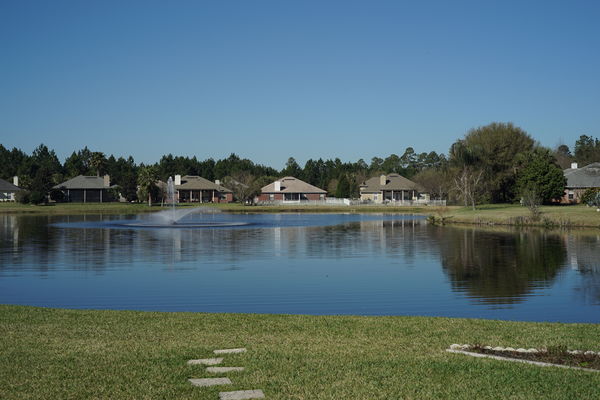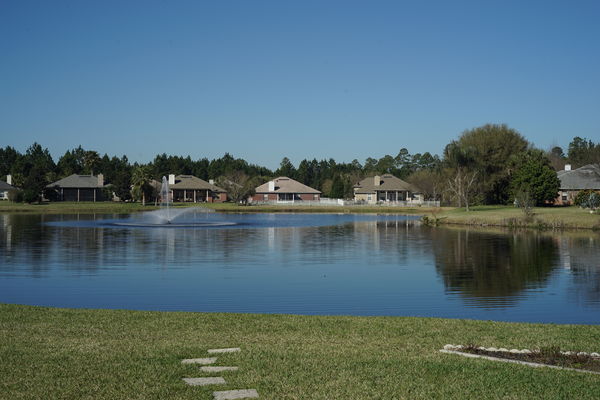Sharpest Aperture?!
May 30, 2016 17:01:36 #
May 30, 2016 19:06:52 #
I have found that the better lens reviews rate the sharpness of a given lens over its range of aperture settings. End the controversy by consulting such a review for the lens in question.
May 30, 2016 20:15:06 #
Do these reviews address the DOF aspects? I was not aware that they did. I am sorry if this has deteriorated into a "controvery". it was my intention to present the question and have the pros and cons presented for all of our edification. I am primarily interested in the DOF sharpness as it relates to aperture settings. Remember the Fallen today...
May 31, 2016 06:42:03 #
The general rule of thumb I have heard for years is two stops down from maximum - just a "Rule of Thumb," though.
May 31, 2016 07:50:40 #
zigipha
Loc: north nj
jcboy3 wrote:
Gene, you missed the point. This was not about sharpness at focus, but sharpness over a wide DOF. The point being that for a given DOF, the suggested aperture is the minimum for acceptable focus. The sharpness will improve as you stop down, until the effects of diffraction outweigh the increased DOF.

May 31, 2016 08:49:02 #
wj cody
Loc: springfield illinois
it you are using a full frame digital imaging device, like my leica monochrom, or film cameras, the best apertures may range from f5.6 throught f11. for large format cameras, it can depend on the bellows draw, and aperture settings will increase exponentially.
May 31, 2016 09:00:58 #
folkus wrote:
When I Googled "Sharpest Aperture" I found Ken Rockwell's discussion ...
You don't need to Google stuff and ask for opinions. It's easy to find out for yourself.
To start with, don't confuse sharpness with DOF. If you want to learn about DOF, play with the Cambridge in Colour DEPTH OF FIELD CALCULATOR (click on show advanced to see all of the options.
People often think of sharpness as being whether a lens is sharp at the center. It is just as important to consider whether it is sharp edge to edge and corner to corner. It's easy to get a lens to be sharp in the center but off-center is a different matter and it will explain where prime lenses are superior to zooms.
The test is simple. Pick a distant subject (100 yards/meters) with details across the entire field like fences, leaves, etc. Take an image focused on the distant detail (at infinity) starting from wide open to fully stopped down. Now look at the results at 100%. Look in the center, the edges and the corners - a little difficult since it's hard for stuff in the corners to be close to "infinity" unless it's a telephoto lens.
You will probably find what I learned testing a 50 year old Leica Summicron (f/2) Rigid. It gets sharp in the center at f/4 (two stops down) and the edges and corners continue to improve until f/16. There is theoretically supposed to be some diffraction showing up at f/16 but it is so minor that you probably can't see it.
So if all I want is sharpness in the center, f/4 or f/5.6 would be fine. If I am shooting landscapes I use f/8-f/16 depending on subject matter.
Also notice that there is vignette at f/2 that is almost gone by f/4, if that matters.
May 31, 2016 09:09:17 #
wj cody wrote:
it you are using a full frame digital imaging device, like my leica monochrom, or film cameras, the best apertures may range from f5.6 throught f11. for large format cameras, it can depend on the bellows draw, and aperture settings will increase exponentially.
Agreed. As a simple rule-of-thumb I double that for 120 medium format (f/11 to f/22) and again for 4x5 (f/22 to f/45). I would double it once more for 8x10 but I don't use that format.
May 31, 2016 09:16:57 #
joer wrote:
It depends on the lens, sensors size and so many other factors. There is no global sharpest f-stop.

If the laws of physics didn't come into play, you could use an f:64 or higher number for sharper. A pin hole maybe? LoL
May 31, 2016 09:30:05 #
jerryc41 wrote:
The general rule of thumb I have heard for years is two stops down from maximum - just a "Rule of Thumb," though.
That is in regard to the sharpness at the point of focus, which is not what the OP is interesting in.
He is asking about sharpness across a range of Depth of Field. Or, if one needs good sharpness from this distance to that distance... do you just use a DOF table to match the total distance, or is there more to it? And indeed there is a lot more to it!
The old rule of thumb about stopping down two stops relates to where the quality of the lens surface (how accurately it is shaped during manufacture) becomes the major cause of poor focus (i.e., at a wide open aperture) compared to the point when further stopped down where diffraction becomes the primary cause of blur. Somewhere between those two apertures will be the point where the focused distance is the sharpest the lens can produce.
Of course that is at some fixed DOF and may not be the DOF needed for any give image.
For an idea of what happens at different DOF distances, particularly in respect to larger distances where diffraction becomes more significant, there is a really useful calculator at http://www.tawbaware.com/maxlyons/calc.htm which can show a graph that includes diffraction. You have to go down just below the graph and click on the button for "Add diffraction blur to focus blur" before calculating DOF.
A good example to play with is the use of an 85mm lens, focused at 10 feet, mounted on a camera with an APS-C body. A traditional DOF chart suggests that using f/2.8 will provide a narrow DOF of about 5 inches, while f/24 will increase the DOF to 3' 10". It ain't really so! Add in the diffraction and certainly the DOF for f/2.8 is about 5 inches, and it is sharp at the point of focus where the blur diameter is about 0.003mm. But at f/24 we don't get 3' 10" of DOF where the CoC stays below 0.019. Instead we get only a distance of maybe 1 foot. But horror of horrors the blur size at the point of focus is 0.015, which is nearly (at it's best) as large as the worst case blur of the edges of calculated DOF for that sensor! (F/24 was selected because it hit right at 0.015mm blur on the graph. At f/30 the blur from diffraction is equal to the desired CoC maximum of 0.019mm, and DOF is non existent!)
At that particular distance/focal length/sensor combination, f/16 might work for a portrait, where narrow DOF is okay and a sharp image is not the point. If wouldn't work well for a landscape shot!
For portraits the way to get sharper images is the use of more powerful strobes! For landscapes the answer is wider angle lenses.
May 31, 2016 09:44:46 #
wj cody
Loc: springfield illinois
selmslie wrote:
Agreed. As a simple rule-of-thumb I double that for 120 medium format (f/11 to f/22) and again for 4x5 (f/22 to f/45). I would double it once more for 8x10 but I don't use that format.
you are right on it. this is why a lot of large format photographers have a tape measure in their gadget bags!
May 31, 2016 09:58:29 #
Mark7829
Loc: Calfornia
The rules don't apply. Each lens is different. I googled Nikon a while back and they provided the sharpest aperture of each lens. You would be surprised that most are in the f/8 to 4.5 range, that is where all the limitations of the lens is at minimal levels that includes vignetting, chromatic aberration, distortion, which like diffraction robs the lens of sharpness. Yes some lenses are at there sharpest at f/11 but others are much flower in particular ultra wides.
May 31, 2016 10:22:21 #
jackpi
Loc: Southwest Ohio
folkus wrote:
When I Googled "Sharpest Aperture" I fou... (show quote)
You need lens test data.
May 31, 2016 10:32:49 #
take a sharp page from a magazine , fix it to fence in back yard , now on a tripod start taking pictures of it at all the possible F stop .then in your PC crop a section of each picture taken , the result will surprise you . if you have a f 5.6 to 22 400mm tokina [ example ] found that dont use it at 5.6 not sharp at all , from F8 to 16 , it is good , at 22 you start again to loose again . fun to do , would be not fun with film .
May 31, 2016 10:57:26 #
Mark7829 wrote:
The rules don't apply. Each lens is different. I googled Nikon a while back and they provided the sharpest aperture of each lens. ...
Each lens is certainly different but you still have to decide whether you care about sharpness near the center or across the entire image.
If the subject is in the center of the frame and you are using a relatively shallow DOF, sharpness at the center is more important. Two or three stops down is probably about right. You may not care about vignetting and several other aberrations. In this case a zoom lens may be adequate.
If you are shooting a landscape or otherwise need more DOF, the entire width of the image is important. Getting closer to the diffraction limit is probably optimal. In this case a prime lens may be unbeatable.
It is important to understand how your lens will perform for the kind of images you want to capture. Blanket statements, tables, graphs and theories are otherwise useless.
jackpi wrote:
You need lens test data.
You can easily test your own lens yourself. Don't rely on someone else to do it for you unless you have not bought it yet.
If you want to reply, then register here. Registration is free and your account is created instantly, so you can post right away.







